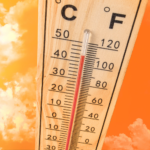When I first moved to the US from Sweden, some things changed that I still today have trouble with and I am talking about measurements. So let’s look at some numbers not taking into consideration the measurements. To give you a few examples, my height went from 157 to 5.1 My weight from 63 to 139. My shoe sizes went from 36 to 5. And my clothes size from 38 to 12.
Of course, I was the same size as before, but the measurements had changed. I went from 157 centimeters to 5.1 feet. From 63 kilograms to 139 pounds, I don’t know what the reason is for the shoes and the clothes, but today I am gonna talk about the differences between the two systems, the US imperial system and the metric system.

The Imperial System
As a system the Imperial Unit system was first defined in the British Weights and Measures Act of 1824. . It was later reduced and refined. However, most countries that used it, the British Empire and the colonists, have since moved to the metric system units.
Only three countries, the US, Liberia, and Mayanmar, still mostly and officially stick to the Imperial system. Which uses distances, weight, height, and area measurements that can ultimately be traced back to the body parts and everyday items. The United States is the only real stronghold of the imperial system in the world to date.
Here using miles and gallons is the norm. Even though scientists use metric and new units like megabytes and megapixels, runners compete in 100 meters like everyone else in the world.
The UK is the country stuck in the middle of both systems, being the birthplace of the imperial system itself.
Here the metric is partially adopted, but miles persist, and people routinely refer to pint miles per gallon pounds. Even stones in their everyday lives.
Some products are persistently imperial, measured worldwide. For example, jean sizes measuring waste and length separately are just in inches, and piping and screen sizes are also in inches almost everywhere.
Not only are the number of ounces in pints, quarts, and gallons all larger in the imperial system, but the size of one fluid ounce is all so different.

In the Imperial system, we talk about one fluid ounce, which is 28.41 milliliter, while in the US system, one fluid ounce is 29.57 milliliter, a little more. One cup is a measurement not usually used in the imperial system, but one cup in the US is eight fluid ounces. Then we have one pint in the Imperial system, which is 20 fluid ounces in the US system, where one pint is 16 fluid ounces, which means that the pint in the Imperial system is 568.26 milliliters. While a pint in the US is 473.18 milliliter. A quart in the imperial system is 40 fluid ounces. While in the US system, it’s only 32 fluid ounces.
A quart is equal to two pints. But since the pint size is different between the two systems, so is the quart.
And then we have a gallon. A gallon is four quarts, eight pints, or 160 fluid ounces if you talk about the imperial system and 128 fluid ounces in the US system. So this is probably the most confusing part of the imperial system versus the US. From now on, I will only talk about the US system.

Now let’s take a look at the length. We start with one inch, about two and a half centimeters.
Next, we have one foot, and the foot is 12 inches.
We have a yard, which is three feet or 36 inches, the closest to one meter. It’s a little shorter than one meter in the metric system.
And then we have a mile, which is 5,280 feet or 1,760 yards, and this is 1.6 kilometers.
To be extra confusing, we have a mile in the metric system equal to ten kilometers.
Then we have the weight measurements. Let’s start with one pound. One pound is a little bit less than half a kilogram. It is 0.4536 kilogram, and one pound is equal to 16 ounces.
One ounce is 28.35 grams.
And let’s end the part about the US system, about temperature. The US used the Fahrenheit scale compared to Celsius in the metric system.

The origin of the Fahrenheit scale is based on a proposed scale from the physicist Daniel Gabriel Fahrenheit in 1724; the defining point of zero degrees Fahrenheit was established as the freezing temperature of a solution of brane made from a mixture of water, ice, and ammonia chloride or salt. The other limit was his best estimate of the average human body, originally set at 90 degrees Fahrenheit, then adjusted to 96 degrees Fahrenheit. Today, the normal body temperature value is 98.6 degrees Fahrenheit.
For much of the 20th century, this scale was defined by two different fixed points, and the first point was the temperature where pure water freezes, defined as 32 degrees Fahrenheit. This is the same point that the Celsius system uses. In Celsius, the freezing point of water is zero degrees. The second fixed point in the Fahrenheit system is the boiling point of water, and it was defined at 212 degrees Fahrenheit in the Celsius scale we also use the boiling point of water, but here it is set to a hundred degrees Celsius. So when I first moved over here, I had a really hard time deciding how to dress by just looking at the temperature outside. It didn’t say anything to me, but I quickly learned how to get an estimate. If I read the temperature in Fahrenheit, I had first to subtract 32 degrees and then divide the rest by 1.8, for example. If the temperature outside said 84 degrees, I took 84 and subtracted 32, giving me 52 degrees. I divided that by 1.8, and it gave me 28.9 degrees. That would be approximately the Celsius degree of 82 degrees Fahrenheit. But nowadays, I have adjusted, and I know how warm or cold it is by looking at the Fahrenheit degrees, but this was tough in the beginning, and let us not even begin talking about trying to bake something. I had no idea what temperature to put the oven on or how to translate the measurements from what I was used to with the metric system.
The Metric System

Now let’s talk a little bit more about the metric system. The metric system use Base 10. You have a base measurement in each category, and then you use the same prefix for all types of measurements.
So let’s take a look at length measures. The base measurement here is the meter. As we said earlier, one meter is a little shorter than a yard, which is divided into decimeters, deci means 1/10th. So one meter is the same as ten decimeters. Or if you want a smaller unit, you can talk about centimeter centi meaning 1/100th. So one meter is a hundred centimeters, and the smallest in common use is a millimeter. Milli means 1/1000th. So a meter is 1000. millimeter, Deci, centi, and milli are prefix that can be used both when we talk about volume and mass. We also have a kilometer. One kilometer is 1000 meters since the prefix kilo means a thousand.
When we talk about volume, the base is liter when we talk about cooking, for example, or buying things in bottles. The SI uses a cubic meter as the base. One cubic meter of room temperature water is the same as one liter, but more often than using cubic meter, we use a liter as the base, and one liter is the same as 10 deciliters.
When it comes to weight or mass, the base unit is gram. but gram is very small unit, so we usually talk about kilograms. And kilo, as I said, means a thousand. So one kilogram is a thousand grams. When you do cooking or baking, you often talk about hectogram, and hecto means 100. So a hectogram is a hundred grams. And when we talk about very small units, we can talk about milligrams; one milligram is 1/1000th of a gram. Or saying it the other way, one gram is the same as a thousand milligrams.
And let’s just quickly talk about temperature. I mentioned it before, We use Celsius degrees, and Celsius was actually a Swede, and I have talked about him in an earlier episode. Still, in this scale, water freezes at zero degree Celsius. It boils at a hundred degrees Celsius, the two set points. And then, you made a scale divided by a hundred degrees between the two. Normal body temperature, when we talk about Celsius, is 37 degrees.
Why Don’t The US Use The Metric System?

So now, why don’t you s use the metric system? Well, there have been many attempts, but none have been successful. The Metric Conversion Act of 1975, signed into law by President Ford, states that the metric system is to be the preferred system of weight and measure for United States trade and commerce. Still, all conversions were to be completely voluntary. Later, an executive order by George h w Bush in 1991 directed departments and agencies within the executive Of the United States government to take all appropriate measures within their authority to use the metric system as the preferred system of weights and measures for the United States trade and commerce. So it went from being completely voluntary to being the preferred system despite this, there is very little of the metric system used today.
Since 1994, it has been mandatory to double labeling on food and other consumer goods. But there it stops.
So why are we not metric in the US?
There are several reasons. The first one is it would initially be rather expensive. Just imagine the cost of replacing all road signs which tells you what speed and distance.
The second reason is it would be a very slow and long process.
And the third reason is that people must be willing and want to change the system. And I think that’s where we have the most resistance today.

Or is it?
Maybe it is not as unusual as you think if we look closer. Have you, for example, seen a two-liter soda bottle or a 750-milliliter bottle of wine? And the next time you wash your hair, look at the shampoo bottle. I bet it tells you how many milliliters it contains, and I am sure that the size of the plug you connect your earphones to your phone or computer with is measured in millimeters, and maybe you or someone you know has run a 5K, which is a five-kilometer race. And when it comes to nutrition, we often measure fat, carbs, sugar, fiber, proteins, et cetera, in grams.
And did you know that diamonds are all measured in the metric system? One carat is 200 milligrams.
So why do I think it’s time to change, and why do I think it’s important to change?
First, I think it causes unnecessary isolation when Americans aren’t metric fluent and don’t understand the system. Even if you have heard about it, it does not encourage collaboration and communication across borders. I think it is very important that we teach the metric system in our elementary schools and not just teach it. I think it’s important that the next generation of Americans become metric fluent.
The second reason is that living with a dual measurement system can lead to errors. If you go online, you can find many horror stories where mistakes have been made that were both costly and deadly.
And my third reason is that the metric system, with its prefix, makes conversion between units so much easier to learn and understand.
Upcoming
Next week. on A Swedish Fika, I will talk about the big Swedish immigration to America in the 19th and early 20th centuries. And for those of you listening in the USA and having some Swedish ancestry, I wouldn’t be surprised. If your relatives came over during this period.
Until next time
As we say in Sweden
Hej Då!




